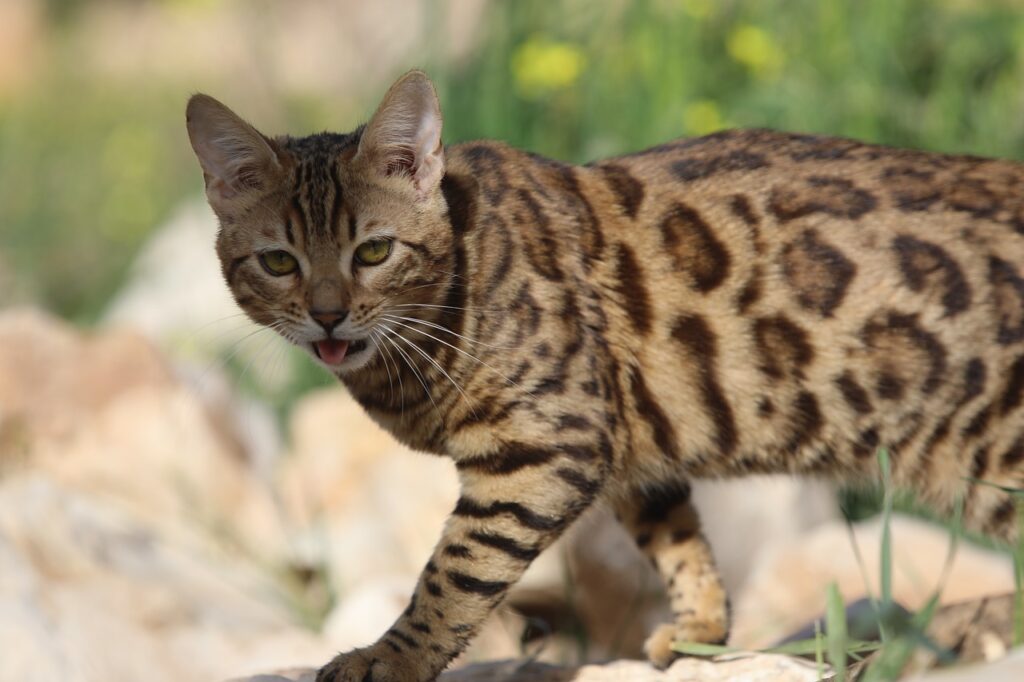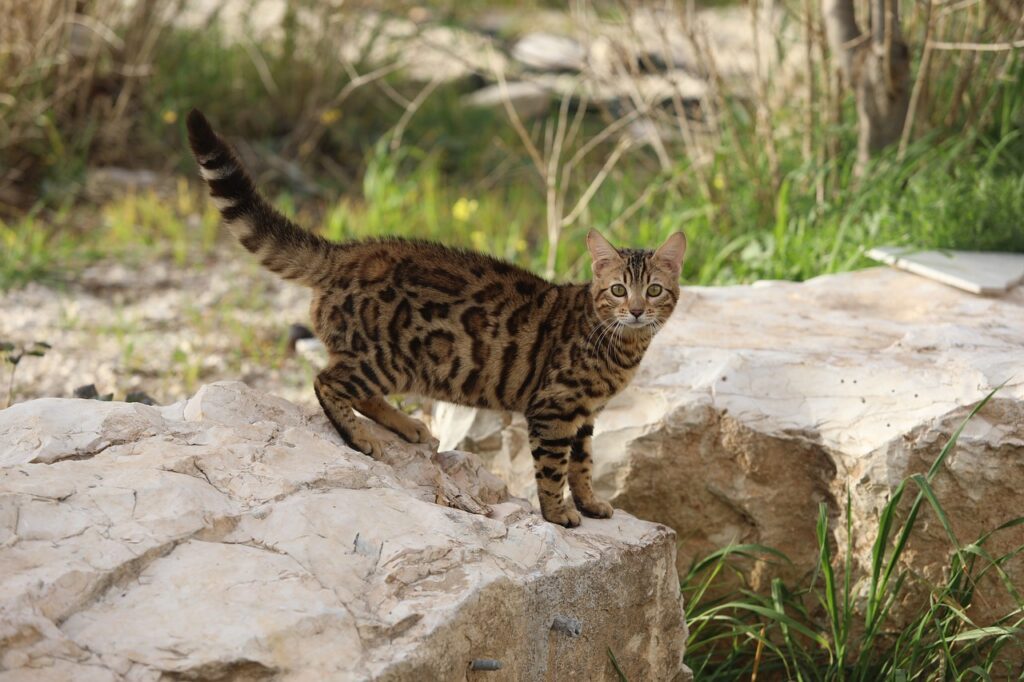
Have you ever wondered why some cats seem to meow more than others? It’s a question that many cat owners find themselves pondering. In this article, we will explore the fascinating world of feline communication and delve into the reasons behind why some cats are more vocal than their counterparts. From breed differences to individual personality traits, there are several factors that contribute to a cat’s tendency to meow. So, if you’re curious to uncover the secrets behind your cat’s incessant meowing, keep reading to find out more.

Table of Contents
Physical Factors
Breed
The breed of your cat can play a role in how much they meow. Certain breeds, such as Siamese and Oriental Shorthairs, are known for being more vocal than others. These cats have a natural tendency to communicate through meowing, so it’s not uncommon for them to be more chatty. On the other hand, breeds like the British Shorthair or Ragdoll tend to be quieter and less prone to excessive meowing.
Age
Just like humans, cats go through different stages in their lives, and their vocalizations can change accordingly. Kittens, for example, tend to meow more frequently as a way to communicate their needs to their mothers. However, as they grow older and become more independent, their meowing may decrease. Senior cats, on the other hand, may start to meow more due to cognitive decline or medical issues.
Health Issues
Certain health issues can cause cats to meow more than usual. For instance, cats with dental problems or urinary tract infections may vocalize their discomfort. It’s important to monitor your cat’s overall health and consult with a veterinarian if you notice any changes in their meowing habits.
Hormonal Influences
Hormonal influences, such as heat cycles in female cats or mating calls in males, can significantly increase their vocalizations. Female cats that are in heat will often meow loudly and persistently to attract potential mates, while male cats may meow during mating season. These vocalizations are a natural part of their reproductive behavior and can be expected during these times.
Environmental Factors
Attention and Interaction
Cats are social animals and rely on attention and interaction from their owners to fulfill their emotional and social needs. If your cat feels neglected or lacks stimulation, they may resort to excessive meowing as a means of getting your attention. Make sure to spend quality time with your cat, engage in play sessions, and provide mental stimulation to minimize attention-seeking meows.
Stress and Anxiety
Stress and anxiety can manifest in cats through increased vocalizations. Changes in their environment, such as moving to a new house or the presence of new pets, can trigger stress and lead to excessive meowing. Creating a calm and secure environment for your cat with familiar routines and plenty of hiding spots can help reduce their anxiety and minimize meowing.
Loneliness
Cats are social beings, and their well-being can be affected by feelings of loneliness. If your cat spends long periods alone without companionship, they may meow more frequently as a way to express their desire for social interaction. Consider adopting a second cat or providing engaging toys and interactive feeders to keep them mentally stimulated in your absence.
Changes in Routine or Environment
Cats are creatures of habit, and any disruptions to their routine or environment can cause increased meowing. Moving to a new home, rearranging furniture, or even changes in your work schedule can be unsettling for your feline friend. Providing them with consistency, familiar scents, and a safe space to retreat to can help alleviate their anxiety and reduce excessive meowing.
Social Factors
Communication
Meowing is a primary form of communication for cats. They may meow to greet you, ask for food, or simply to get attention. Each cat has its own unique set of vocalizations and meowing patterns, so understanding your cat’s specific communication cues can help in deciphering their needs and minimizing unnecessary meowing.
Attention Seeking
Some cats may meow excessively to seek attention from their owners. If they have learned that meowing results in their needs being met, they may continue to use it as a strategy to get what they want. It’s important to establish boundaries and use positive reinforcement to reward desirable behaviors while ignoring excessive meowing.
Territorial Behavior
Cats are territorial creatures, and excessive meowing can be a sign of marking their territory or defending it from potential threats. If your cat perceives a rival or feels their space is being intruded upon, they may meow more assertively. Providing multiple resources and vertical spaces for your cat to claim as their own can help alleviate territorial tensions and reduce meowing.
Training and Reinforcement
Learned Behavior
Just like with any other behavior, excessive meowing can be reinforced or shaped through learned behavior. If you consistently respond to your cat’s meowing by giving them attention, food, or other rewards, they will learn that meowing is an effective way to communicate their desires. To modify this behavior, it’s important to use consistent training techniques and redirect their attention to more appropriate means of communication.
Positive Reinforcement
Positive reinforcement is an effective method to encourage desired behaviors in cats. When your cat meows less or displays quieter vocalizations, praise and reward them with treats or playtime. By associating calm behavior with positive experiences, your cat will be motivated to reduce excessive meowing.
Negative Reinforcement
Negative reinforcement, such as spraying water or making a loud noise, can be used in cases where excessive meowing becomes a nuisance. However, it’s crucial to use such methods sparingly and only as a last resort. Negative reinforcement should always be accompanied by positive reinforcement to promote alternative, quieter behaviors.

Gender Differences
Male vs. Female Cats
Male and female cats may exhibit different meowing patterns due to their hormonal differences. Male cats, especially those that are not neutered, may meow more frequently as they are more prone to roaming and seeking mates. Female cats, on the other hand, may meow more during their heat cycles, signaling their readiness to mate. Spaying or neutering your cat can help regulate their hormone levels and reduce excessive meowing associated with mating behaviors.
Personality Traits
Dominance
Some cats naturally have dominant personalities and may meow more to assert their authority or demand attention. They may use meowing as a way to communicate their dominance toward other pets or even their owners. Providing consistent boundaries, assertive but gentle discipline, and ample mental and physical stimulation can help manage dominant behaviors and reduce excessive meowing.
Playfulness
Playful cats may use meowing as an invitation to engage in interactive play sessions. They may meow to initiate chasing games or to seek your participation. Ensuring your cat has plenty of toys and engaging playtime can help satisfy their playful instincts and minimize attention-seeking meows.
Affection
Some cats meow more as a form of expressing their affection and seeking proximity to their owners. They may meow softly while purring to communicate their contentment and desire for physical contact. Responding to their affectionate meows with gentle petting and cuddling can strengthen the bond between you and your feline companion.
Curiosity
Curiosity is a natural trait in cats, and it can be expressed through meowing. Cats may meow when investigating new environments, objects, or scents. This type of meowing is usually short-lived and may decrease as they become more familiar with their surroundings. Providing a stimulating environment with safe exploration opportunities can satisfy their curiosity and reduce excessive meowing.
Health and Dietary Factors
Hunger or Thirst
If your cat’s meowing increases around feeding times or when their water bowl is empty, it may be a clear indication that your cat is hungry or thirsty. Ensuring your cat has access to fresh water at all times and sticking to a regular feeding schedule can help minimize excessive meowing related to hunger or thirst.
Dietary Issues
Some cats may develop dietary issues, such as food allergies or sensitivities, that can lead to increased meowing. If you suspect a dietary problem, consult with your veterinarian to determine the best course of action, which may involve switching to a different cat food or exploring specialized diets.
Pain or Discomfort
Cats may meow more if they are experiencing pain or discomfort. This could be due to dental issues, joint pain, or underlying medical conditions. It’s crucial to monitor your cat’s overall health and behavior and seek veterinary care if you suspect they are in pain. Treating the underlying cause of their discomfort can help alleviate excessive meowing.
Attention-Seeking Behavior
Isolation and Neglect
Cats that feel isolated or neglected can resort to excessive meowing as a cry for attention. Providing them with a safe and comfortable environment, plenty of toys, and engaging interactions can help minimize feelings of isolation and reduce attention-seeking meows.
Lack of Mental Stimulation
Boredom can contribute to excessive meowing in cats. If they lack mental stimulation, they may resort to vocalizing their boredom. Providing environmental enrichment, such as puzzle toys, interactive feeders, and designated play areas, can help keep your cat mentally engaged and reduce attention-seeking meowing.
Signs of Distress or Boredom
Excessive meowing, especially if accompanied by other signs of distress or boredom, such as excessive grooming or destructive behavior, may indicate underlying emotional issues. In such cases, it’s essential to consult with a veterinarian or animal behaviorist to address the root cause of the distress and provide appropriate behavioral interventions.
Reproductive Behavior
Mating Calls
Male cats that have not been neutered may meow excessively during mating season as they seek out potential mates. These mating calls can be loud and persistent as the male cat announces his availability to nearby females. Neutering your male cat can minimize or eliminate these vocalizations.
Heat Cycles
Female cats, during their heat cycles, may meow loudly and persistently to attract male cats for mating. This behavior is a natural part of their reproductive cycle and can be expected periodically. Spaying your female cat not only helps prevent unwanted pregnancies but also reduces excessive meowing associated with heat cycles.
Medical Conditions
Hyperthyroidism
Hyperthyroidism is a common condition in older cats that results in an overactive thyroid gland. One of the symptoms of this condition can be excessive meowing. If your cat’s meowing increases significantly, accompanied by weight loss and increased appetite, it’s important to have them evaluated by a veterinarian.
Dementia or Cognitive Decline
As cats age, they may experience cognitive decline similar to dementia in humans. This condition, known as feline cognitive dysfunction, can lead to increased meowing, confusion, and other behavioral changes. Providing a calm and predictable environment, along with regular mental stimulation, can help manage these symptoms.
Feline Cognitive Dysfunction
Feline cognitive dysfunction, or cat dementia, can also cause increased meowing. Cats may experience disorientation, restlessness, and other cognitive impairments as they age. If your elderly cat displays excessive meowing along with other signs of cognitive decline, consult with your veterinarian for appropriate management strategies.
Other Underlying Medical Issues
Various medical conditions, such as urinary tract infections, dental problems, or pain from arthritis, can cause cats to meow more than usual. It’s important to monitor your cat’s overall health, watch for any changes in their behavior or meowing patterns, and seek veterinary care if needed. Treating the underlying medical issue can alleviate excessive meowing associated with pain or discomfort.
In conclusion, there are numerous factors that can contribute to why some cats meow more than others. From physical factors like breed, age, and health issues to environmental factors such as attention, stress, and changes in routine, each cat’s meowing habits can be unique. Social factors like communication, attention-seeking, and territorial behavior also play a significant role, as well as training methods and gender differences. Personality traits, health issues, and attention-seeking behavior can further influence a cat’s meowing patterns. By understanding these factors and addressing them appropriately, you can help minimize excessive meowing and ensure a harmonious relationship with your feline companion.
